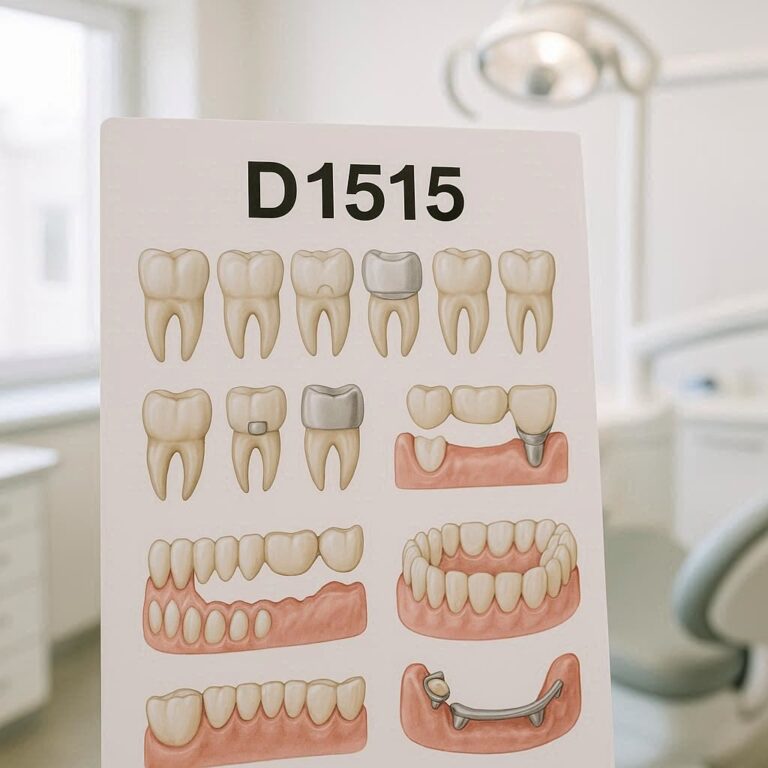All-on-4 Dental Implants ADA Codes: A Comprehensive Guide
1. Introduction to All-on-4 Dental Implants
All-on-4 dental implants represent a revolutionary approach to dental restoration, providing patients with a full arch of teeth using only four strategically placed implants. This method has gained popularity due to its efficiency, cost-effectiveness, and the ability to restore a patient’s smile with minimal downtime. For dental professionals, accurately coding these procedures using ADA codes is essential for proper billing, insurance claims, and maintaining compliance with industry standards.

2. Understanding ADA Dental Codes
The American Dental Association (ADA) provides a standardized set of codes that dental professionals use to document and bill for procedures. Understanding these codes, especially in the context of complex procedures like All-on-4 dental implants, is crucial for the success of a dental practice.
Implant Bridge Dental Codes
The ADA has specific codes for implant bridges, which are used when a patient requires a prosthetic that spans across implants to replace missing teeth. The codes for these procedures can vary depending on the number of units involved and the materials used.
Implant Dental Code
Implant dental codes cover the placement of the implant itself. These codes are critical as they differentiate between different types of implants and the techniques used for placement.
Surgical Guide Dental Code
Surgical guides are essential tools in implant dentistry, providing precise guidance for implant placement. ADA codes for surgical guides reflect the planning and preparation required for successful implantation.
Implant Overdenture Code
Implant overdentures are used when a removable prosthesis is attached to implants. The ADA provides specific codes for these procedures, reflecting the complexity of the overdenture design and attachment.
Zirconia Crown Code
Zirconia crowns are a popular choice in implant dentistry due to their strength and aesthetic appeal. ADA codes for zirconia crowns are used when these materials are chosen for the final restoration in an All-on-4 procedure.
3. The Importance of Accurate Coding in Dental Practices
Accurate ADA coding is more than just a billing necessity; it’s a critical component of effective patient care. Proper coding ensures that procedures are documented correctly, reducing the risk of insurance claim denials and improving the overall financial health of a dental practice.
4. ADA Codes for Implant Bridge Procedures
Explanation and Breakdown of Codes
Implant bridges require detailed coding that takes into account the number of units, the materials used, and the specific type of bridge. The ADA provides a range of codes for different scenarios, each of which must be carefully selected to reflect the exact procedure performed.
Case Studies and Applications
In practice, choosing the correct code can mean the difference between a smooth insurance claim and a rejected one. This section explores real-world case studies where accurate coding made a significant difference in the outcome of the procedure and the financial aspects of the practice.
5. ADA Codes for Dental Implant Placement
Detailed Coding for Single and Multiple Implants
When placing implants, whether a single unit or multiple, the ADA codes vary. Each scenario has a specific set of codes that must be used to accurately reflect the procedure.
Common Errors and How to Avoid Them
Coding errors can be costly and time-consuming. This section provides a detailed overview of common mistakes in implant coding and offers practical tips for avoiding these pitfalls.
6. ADA Codes for Surgical Guides
Purpose and Usage of Surgical Guides
Surgical guides are invaluable in ensuring the correct placement of implants, especially in All-on-4 procedures. The ADA has codes that specifically cover the design, production, and use of these guides.
Coding Surgical Guides in All-on-4 Procedures
Accurately coding the use of surgical guides in All-on-4 procedures requires an understanding of both the technical aspects of the guide and the broader context of the implant placement. This section provides a step-by-step guide to selecting the correct codes.
7. ADA Codes for Implant Overdentures
When and How to Use Implant Overdenture Codes
Implant overdentures are often used in cases where patients require a removable prosthesis that is securely attached to implants. The ADA provides specific codes for these procedures, which must be selected based on the type of overdenture and the number of implants used.
Cost Implications and Insurance Considerations
Correctly coding implant overdentures can have significant cost implications for both the patient and the practice. This section explores the financial aspects of overdenture coding and offers strategies for maximizing insurance reimbursement.
8. ADA Codes for Zirconia Crowns in All-on-4 Procedures
Advantages of Zirconia in Implant Dentistry
Zirconia crowns offer a blend of strength and aesthetics, making them a popular choice in All-on-4 restorations. Understanding the ADA codes for zirconia crowns is essential for accurate billing and documentation.
Specific Codes for Zirconia Crowns
This section provides a detailed overview of the ADA codes specific to zirconia crowns, including how to choose the right code based on the type of restoration and the materials used.
9. Case Study: Successful Implementation of All-on-4 with Accurate ADA Coding
A detailed case study that walks through the process of performing an All-on-4 procedure from start to finish, with a focus on accurate ADA coding. This section highlights the importance of code selection and its impact on both the clinical and financial outcomes.
10. Integrating ADA Codes with Practice Management Software
Streamlining Billing and Documentation
Integrating ADA codes with practice management software can streamline the billing process and reduce the risk of errors. This section explores the benefits of software integration and offers tips for getting started.
Enhancing Accuracy and Compliance
Using practice management software to handle ADA codes can also enhance compliance with industry standards, reducing the risk of audits and fines. This section provides best practices for maintaining accuracy in coding.
11. Common Challenges and Solutions in ADA Coding for All-on-4
Addressing Coding Discrepancies
Discrepancies in coding can lead to significant challenges in billing and insurance claims. This section identifies common coding discrepancies and offers solutions for resolving them.
Best Practices for Documentation
Accurate documentation is key to successful ADA coding. This section provides best practices for ensuring that all procedures are documented correctly, reducing the risk of coding errors.
12. Conclusion
In conclusion, mastering the ADA codes for All-on-4 dental implants is essential for the success of any dental practice. By understanding and accurately applying these codes, dental professionals can ensure that their procedures are documented correctly, their billing is accurate, and their patients receive the best possible care.
13. FAQs
Q1: What are the most common ADA codes used in All-on-4 procedures?
A: The most common ADA codes used in All-on-4 procedures include those for implant placement, surgical guides, and zirconia crowns. Each of these codes must be selected based on the specific details of the procedure.
Q2: How can I ensure that I’m using the correct ADA code for a procedure?
A: To ensure that you’re using the correct ADA code, it’s important to have a thorough understanding of the procedure and the available codes. Using practice management software can also help by providing prompts and checks to ensure accuracy.
Q3: What are the financial implications of incorrect ADA coding?
A: Incorrect ADA coding can lead to denied insurance claims, reduced reimbursement, and potential fines for non-compliance. It’s essential to get coding right the first time to avoid these issues.
Q4: Can I use the same ADA code for different types of implants?
A: No, ADA codes are specific to the type of implant and the procedure performed. Using the wrong code can lead to billing errors and complications with insurance claims.
Q5: How can practice management software help with ADA coding?
A: Practice management software can streamline the coding process by providing prompts, ensuring accuracy, and integrating coding with billing and documentation systems.


